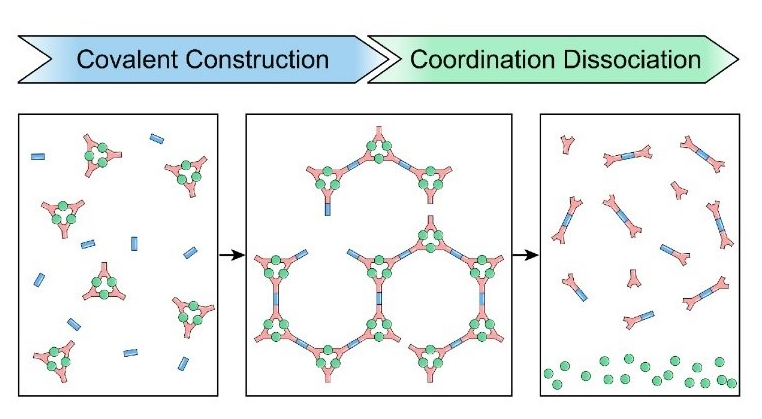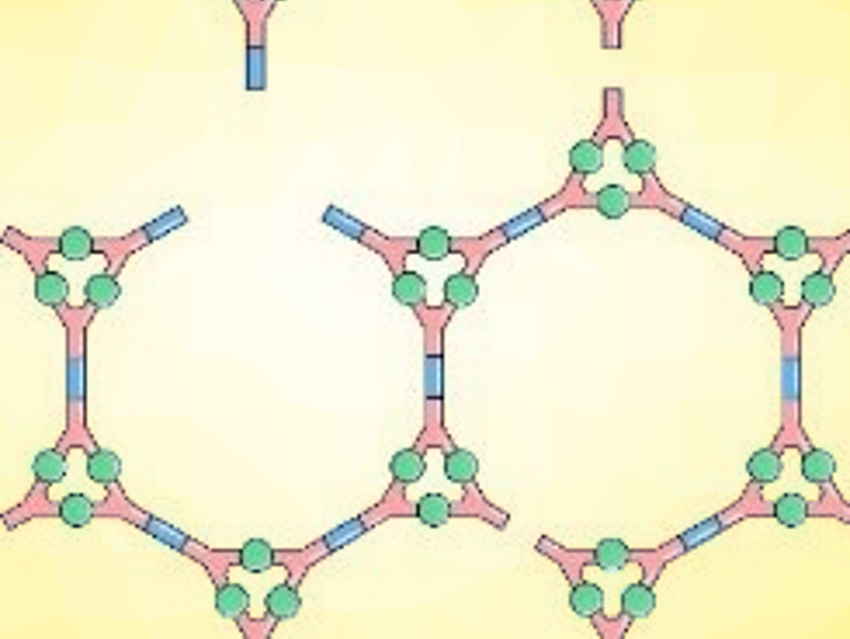Metal–organic frameworks (MOFs) are typically constructed using coordination bonds between metal ions and organic linkers. Covalent organic frameworks (COFs), in contrast, are based on covalent linkages between organic components. Forming MOFs specially designed for an application usually requires thorough synthetic screening and optimization, while COFs need additional metal sites, e.g., for use in catalysis. Combining COF and MOF chemistry could solve these issues.
Qiaowei Li, Fudan University, Shanghai, China, Tao Yi, Donghua University, Shanghai, China, and colleagues have connected trinuclear coordination complexes using imine condensation, a method widely used in COF chemistry—resulting in a framework that contains both coordination bonds and covalent bonds. The framework was prepared from by coordinating Cu(I) ions with pyrazolate‐4‐carboxaldehyde to give an aldehyde‐functionalized trinuclear complex, followed by imine condensation with p‐phenylenediamine. This MOF/COF framework, called FDM‐71, forms honeycomb-like layers (pictured above) stacked in an eclipsed fashion.
When only the copper–pyrazolate coordination bonds in FDM‐71 are dissociated and the covalent bonds are kept intact, the obtained organic components carry information about the structural defects in the original framework (pictured below). This allowed the researchers to study the types and accurate concentrations of structural vacancies.

FDM-71 can catalyze the decomposition of H2O2 into 3O2 and generate reactive oxygen species (ROS). This suggests photodynamic therapy as a potential application for the material.
- An Imine‐Linked Metal–Organic Framework as a Reactive Oxygen Species Generator,
Xiaomin Li, Junyi Wang, Fengfeng Xue, Yichen Wu, Hualong Xu, Tao Yi, Qiaowei Li,
Angew. Chem. Int. Ed. 2020.
https://doi.org/10.1002/anie.202012947




